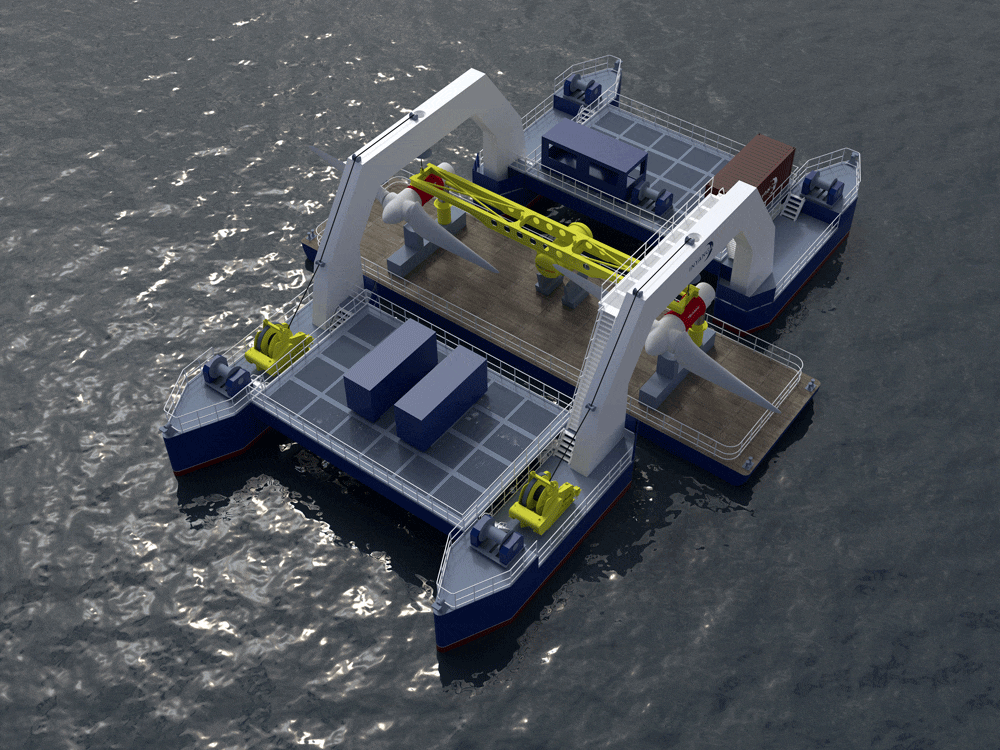Whatever happened to the tidal energy sector? Given the relatively muted press coverage, compared to the column inches devoted to offshore wind farms, you’d be forgiven for thinking that tidal energy capture projects had tailed off somewhat in the past few years – though this is far from being the case. Perhaps wave turbines are not as visually exciting as wind towers and banks of solar panels, but they still have major potential to assist the energy transition in the coming decades.
For example, industry analyst Technavio forecasts a CAGR of 29.5% for the wave and tidal energy market, expecting it to reach just under US$1,398 million by 2028. The sector still faces hurdles, however – among them, limited locations for turbine installations. The biggest barrier, though, is linked to cost.
“Commercialisation of the tidal energy sector has so far been held back by high operations and maintenance costs,” states Richard Parkinson, MD of Inyanga Marine Energy Group, which is the parent company of HydroWing, developer of a tidal stream energy generation turbine of the same name. At present, offshore HydroWing installations require the hire of a heavy-lift vessel, which certainly doesn’t come cheap. Parkinson tells Ship & Boat International: “The cost of using an offshore construction vessel is around £50,000 [US$63,390] per day, not including the cost of fuel oil. It also takes three days to get to the site and then one day to mobilise. Typically, the entire operation would cost around £500,000.”
Inyanga Marine is keen to reduce these costs as much as possible, having drawn up plans for a new means of transporting the HydroWing turbines onto site. This has led to the group’s HydroWing division developing what it calls the ‘Quad Hull Barge’ – an innovative design with the potential to reduce the cost of each operation to just £20,000, Parkinson predicts.
Firstly, let’s take a closer look at the HydroWing itself. The base of this solution is a supporting structure that sits on the seabed, under its own weight. Turbines, equipped with ‘wings’ for ease of deployment, are then lowered into position on the structure. The solution can be scaled to suit various locations and use cases. Parkinson adds: “The turbines are bi-directional, so they generate power as the tide comes in and as it goes out.”
What’s interesting about the wing system is that it simplifies the removal of sets of tidal energy turbines without the need to touch the foundations. As such, Parkinson estimates, recovery of the turbines takes 30 minutes. Combined, the foundation and turbine weigh 65tonnes.
The HydroWing technology is set to play a major role at the Ynni’r Lleuad project, part of the wider Morlais tidal stream energy development, located 2.7nm off the coast of Holyhead, UK. These HydroWing units will be positioned at depths of 35m and will generate approximately 10MW of low-carbon, wave-captured energy for the shoreside community. The site is about an hour’s journey from shore, which would normally mean exorbitant heavy-lifter hire costs. However, HydroWing envisages significant savings by using its Quad Hull Barge to help install and maintain its turbines at this location.
The Quad Hull Barge will measure 41m x 20.8m and will weigh 160tonnes overall. In lightship mode, the barge will draw 1m, increasing to 1.35m when carrying a 65tonne payload. The vessel concept was shaped in partnership with Pelagic Design, which developed the case-loads, stresses and scantlings for the design. “We originally started looking at a catamaran barge,” Parkinson reveals, “but this had issues with pitching and trim during operations. By bringing the lift centrally, we can avoid the effects of pitch and trim and reduce steel weights accordingly.”
Each of the four hulls weighs 25tonnes. “By using four hulls connected by crossbeams and arch support beams, the limit to load width is dramatically increased,” says Parkinson. “Where commercial vessels would typically need to place the load onto the deck with little to no overhang of the load, the Quad Hull Barge locks the load after lifting to the arch. This reduces offshore handling and makes the operation much safer – and means that the width of the load can be independent of the vessel width.”
The Quad Hull Barge will be fitted with six winches: four 20tonne-capacity units for mooring and positioning, and two 65tonne units for launch and recovery. “The recovery winches are connected to an intelligent launch and recovery system [LARS] which has seabed positioning – USBL, subsea cameras and sonar systems to guide the HydroWing turbine onto the substructure,” Parkinson explains. The HydroWing also features a wet mate connection backpack. “The wet mate connectors are mated by the weight of the HydroWing, resulting in instant connection of the device,” he says. “The LARS is released from the surface through hydraulic actuators.”
For the full story and general arrangement, see Ship & Boat International March/April 2024






